Author(s)
Elizabeth A. Povinelli
Drawing from her work as part of the Karrabing Film Collective, Elizabeth A. Povinelli’s essay “In Some Places the Not-Yet Has Long Been Already” (which first appeared in Toward the Not Yet: Art as Public Practice, published by BAK and MIT Press, 2021) contrasts the temporal orientation of late settler liberalism—which is troubled by the coming catastrophes of climate collapse—with the ancestral catastrophes of coloniality and enslavement, which are both past and present.
These ancestral catastrophes, she writes, “keep arriving out of the ground that colonialism and racism tilled, rather than emerging over the horizon of liberal progress.”
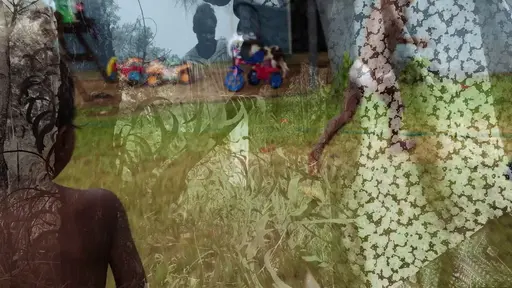
Three members of Karrabing Film Collective—Rex Edmunds, Cecilia Lewis, and I—were travelling to Darwin, Northern Territory, Australia from Belyuen in order to attend a meeting with the Aboriginal Areas Protection Authority (AAPA). The term “karrabing” in our name refers to neither a place nor a people. In the Emmiyangel language, karrabing refers to the state when the vast coastal tides are at their lowest, and is contrasted by karrakal, when the tides are at their highest. But as more than a linguistic sign or reference, karrabing refers to how people should and do belong to each other and the more-than-human worlds that constitute their lands and lie within them. In other words, karrabing is a concept. Karrabing means, as Rex, Cecilia, and other members of the collective have stated, that while members inside the group may have different languages, lands, stories, and totems, these “separate-separate” aspects all formed from the recurrent actions of tides, ancestral totemic movements, their own kin and marriage ties, and the constant ordinary interactions with each other and the more-than-human worlds that connect country and people. Against a settler colonial proprietary imagination, Karrabing Film Collective (hereafter referred to as Karrabing) insists they have their roan-roan (one’s own, in the local creole) places, but these different places and their stories are irreducibly connected to other places. 1
It was mid-December 2020 when we began our trip, and we were watching a storm gather over the harbor. The rain had begun in earnest, which was a good sign after two years in which the monsoons had never properly arrived. Creeks that had never run dry in our lifetimes had been bone dry for a year. As we drove along the bottom side of the city where the harbor was, Rex looked at what was left of the mangroves in the wake of intensive housing and industrial construction and said, “Don’t eat tjimerre (long balm, sea snails) from these mangroves.” Of course, we knew that people did, and so it wasn’t surprising that our conversation turned to the topic of a small Indigenous city camp nearby whose inhabitants sometimes collected food from these sea swamps. Again Rex, who once lived in the camp, speaking this time with our local gallows humor said, “That place is already poisoned from petrol dumping, and now the highway surrounding it, more pollution. Might as well eat poison tjimerre with your petrol tea and pollution breath.” Just as we rounded into the city center, the storm hit.
The environmental geography that surrounded us as we drove from Belyuen to Darwin maps onto two different ways of conceptualizing the social tense of toxic late liberalism, climate collapse, and aesthetic practice. When it comes to toxic late liberalism and climate collapse, two spectral orientations battle for our attention. On one hand, western pundits push us to look at the catastrophes approaching over the horizon, or at this point, already hitting the shoreline. What was on the horizon has now landed—the planet’s over-heating, as a result of the climate toxicity of not merely carbon capitalism but capitalist expansion and domination of the entire terrain of the earth, is in full gear. What a shock it must be for those of whom the horizon has for so long been brightly lit with possibilities. What if the horizon holds not just one, but a series of ever more colossal storms? First is climate collapse, then Covid-19, then a massive environmental shift. How do they right themselves when they have long been told that the horizon is where the truth, goodness, and justice of liberalism reside?
This hopeful orientation toward the horizon is countered by another threat: the catastrophe as ancestral, as something that once arrived on the horizon and has bubbled out of the ground ever since. The arrival over the horizon of explorer and settler boats didn’t herald the establishment of a new Jerusalem or a revolution which would have served as the exemplary model of political action. 2 Nor did those West Africans, enslaved in the belly of cargo hulls, view themselves as being delivered to a divinely benighted land. The arrival of these boats presaged calamitous storm. This storm took roots in the land, extracting and processing what it deemed valuable—ecologies, labor, and cultural goods—and left behind ever more concentrated toxic tailings. When viewing toxic late liberalism and climate collapse from the perspective of ancestral catastrophe, the nature and meaning of material existence is not merely inverted. The ancestral catastrophe is not the same kind of thing-event as the coming catastrophe, nor does it operate within the same temporality. When we begin with the catastrophe of colonialism and enslavement, the location of contemporary climatic, environmental, and social collapse rotates and mutates into something else entirely. Ancestral catastrophes are past and present; they keep arriving out of the ground that colonialism and racism tilled rather than emerging over the horizon of liberal progress. Ancestral catastrophes ground environmental damage in the colonial sphere rather than in the biosphere; in the not-conquered earth rather than the whole earth; in errancies rather than ends; in waywardness rather than war; in maneuvers, endurance, and stubbornness rather than domination, resistance, despair, and hope.
This is why I and others have said that if you want to know what is not yet, look to where it has long already been. And as you look, remember that unless you contribute real effort toward changing these ancestral dynamics, the new round of ruinous action will not simply level the playing field, nor merely place those who have long benefitted from toxic liberal capitalism and its newer illiberal versions—it will lash more forcefully those who have already borne the toxic and climatic burden of racial and colonial capitalism, something the Covid-19 pandemic has made starkly clear.
II.
The three of us driving to AAPA were joined by three other Karrabing members, Angelina Lewis, Kieran Sing, and Sandra Yarrowin. We were showing our most recent film, Day in the Life (2020), to some of the staff responsible for recording and processing the registration of indigenous sacred sites. Day in the Life depicts kinds of obstacles encountered across five points of a typical day at Belyuen, featuring a multilayered hip-hop soundscape punctuated with samples from the left and right wing white media. More than a film screening itself, the meeting was a continuation of discussions about potential policy changes within the agency regarding Karrabing’s understandings of the irreducible dual nature of their connections to the land. The law stated that persons belonged to specific places (mebela roan-roan land, in the local creole), but these specific places, and thus the character of belonging itself, depends on numerous modes of connectivity to other places—environmental connections such as the seas, freshwater swamps, winds, animals, and plants; marriage connections; ritual connections; and the ancestral formation of the geography of the self as various ancestral beings came into contact with each other and then went their separate ways. For Karrabing, this irreducible dynamic of “roan-roan and connected” is not in the past. All these more-than-human agencies, like they themselves, must make their way in the current conditions of toxic late settler liberalism. They must maneuver, endure, and stubbornly hold on in the ancestral present.
We see a similar split-screen orientation in aesthetic theory of indigenous artistic practices as we do in the present bonding of the climate with toxicity. There is a meaningful distinction between traditional and modern indigenous arts and objects. Animating this distinction is the critical theoretical distinction between the cult image and the art image. I am, of course, referring to Walter Benjamin and Theodor Adorno who, for all their discussion about the possibilities of the art image as a break or derivation from its original ritual function, ground the emergence of modern art in a break from what both call the cult image. Let me say, for brevity’s sake, that for these two men the cult image mistakes the location of human agency—placing it in a realm of fetishization as opposed to that of human social relations. Benjamin was wrong to see politics emerging as the goal of art after its separation from that of the cultic image. The very separation of art and cult was political in its origins; it was part and parcel of the colonial catastrophe.
The politics of western appropriation of Native American and indigenous art hewed to this division; Adorno and Benjamin, for example, were themselves articulating the social tense of colonial and racial understandings of “primitive art” rather than inventing revolutionary categories. The history of the west’s encounters with the expressive practices of colonized people can be put into this gross timeline: stolen curios; ethnographic objects; material for the inspiration of modern western art, first stolen without attribution, and then placed side-by-side in various large museum shows before being separated into ritual objects to be repatriated, or not, as better or worse aesthetically realized objects.
The ancestral catastrophe is not merely the inverted image of the catastrophe on the horizon, as such Karrabing’s view is that the cult image is not the elevation of the cult image over the art image. Instead, it is a refusal and displacement of the western division and an opposition of cultic and modern aesthetics as such. This refusal of the western division of cult image and art image is not a refusal of their abiding relations with the more-than-human world, or of the specific expressive semiotics of communicating with that world. Instead, it is a practice of knowledge. Thus, in the film Mermaids, or Aiden in Wonderland (2018) and the rest of our films, some aspects of ancestral narratives are left out and other aspects shown and heard but not explained. As Aiden walks through his roan-roan and connected world with his uncle and brother, viewers splinter into those who understand the meaning and connections between visual and sound elements, those who understand the potential of such connections although not the actual ones in the film, and those who don’t look for such interpretive clues. Thus Karrabing’s aesthetic practice builds on their ancestral ways of showing without telling, mapping “open” ways of telling an ancestral truth onto “inside” ways of understanding it. Think here of what Gregory Bateson, Gilles Deleuze, and Félix Guattari would later understand as the relationship between maps and territories.
The practice of Karrabing’s art is thus turned away from the audience that does not understand—even if it is addressing and absorbing them into their work—and turned toward themselves and the others who do understand. They can make their work visible to each other and their coming generations without giving it away. This making work available is not merely aesthetic nor merely addressed to humans. This is because Karrabing’s aesthetic practices are not based on a theory of beauty, desire, or even politics, but on an understanding of the fundamental dynamic between existential jealousy and reparative, although always insufficient, attentiveness—the key thematic of Wutharr, Saltwater Dreams (2006) and The Jealous One (2007)—and the concentration and orientation of the senses. For Karrabing, jealousy and attentiveness crisscross the human and more-than-human world, and is exemplified in the hunting question, “What will this thing bite?” To answer this question, a person has to have a deep understanding of the kind of thing one is luring and its typical and unusual habitats and modes of existence. It doesn’t matter what is being bitten; there is a deep disinterest in what will elicit a bite, but an extraordinary interest in, and attentiveness to, the tendencies and thus manipulability of the thing you wish to bite. This does not apply merely to nonhuman animals but to human and ancestral beings. But these two categories also bite back if one is not paying attention to them. This was seen in the refrains of the ancestors in Wutharr, Saltwater Dreams, “Punish them, punish them,” who were enraged that the human protagonists had not visited them for some time. In Mermaids, or Aiden in Wonderland, the end of the journey is a meta-jealousy event. Europeans had mistreated the world, failed to attend to its needs, and doubled down on this neglect so much that the Indigenous protagonists had to decide whether they should release a totemic plague that would bite everyone indiscriminately.
In this sense, Karrabing’s films and installations are geared toward concentrating and orienting the senses to attend to the memory and practice of the ancestral present and the ancestral catastrophe they and their more-than-human world find them-selves facing. They are an askesis for the ancestors. They are acts of artistic expression for their totemic lands without being western instances of cultic or art works. They herald what is to come because it is already here.
1 Karrabing Film Collective discuss this conceptual meaning attogetherinart.org
2 I refer here to Hannah Arendt’s justification of the sadistic colonization of the Americas, in which she states that “[c]olonization took place in America and Australia, the two continents that, without culture and a history of their own, had fallen into the hands of Europeans.” Hannah Arendt, The Origins of Totalitarianism (London: Harcourt Brace Jovanovich, 1973), p. 186. For trenchant critiques of Arendt’s position see Kathryn T. Gines, Hannah Arendt and the Negro Question (Bloomington: Indiana University Press, 2014); and Fred Moten, The Universal Machine (Durham, NC: Duke University Press, 2018).
“In Some Places the Not-Yet Has Long Been Already” appears in Jeanne van Heeswijk, Maria Hlavajova, and Rachael Rakes, eds., Toward the Not-Yet: Art as Public Practice (Utrecht and Cambridge, MA: BAK, basis voor actuele kunst and MIT Press, 2021), republished here with permission of the author. Toward the Not-Yet: Art as Public Practice, is a reader in BAK’s SUPERBASICS series and can be purchased at BAK or via MIT Press.
Related

“Rhythm Travel” (1995) was published in Amiri Baraka’s short story collection, Tales of the Out & the Gone (Brooklyn: Akashic Books, 2007), republished here with kind permission of Akashic Books.
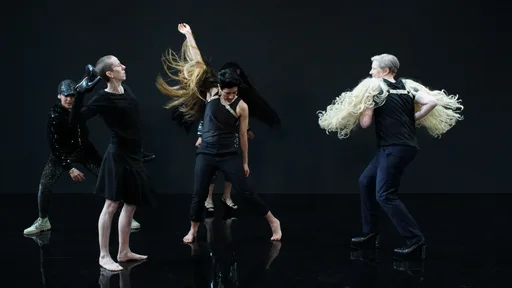
Temporal drag, erotohistoriography, chronomornativity, horniness under capitalism, rhythm, dancing, and crip time.
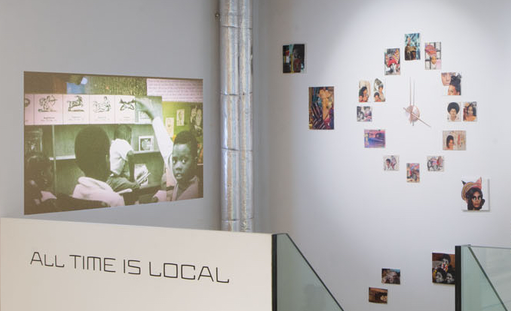
Black Quantum Futurism (Camae Ayewa and Rasheedah Phillips) in conversation with Jeanne van Heeswijk and Rachael Rakes.
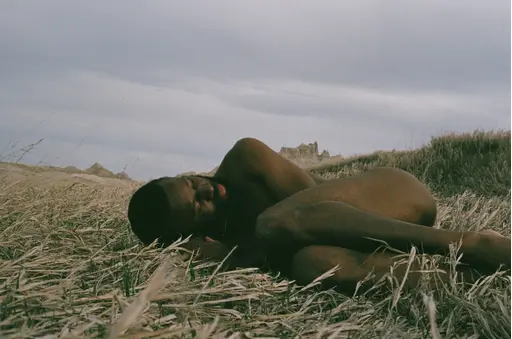
“The Clearing: Music, Dysfluency, Blackness, and Time” was originally published in Journal of Interdisciplinary Voice Studies, 5, no. 2, 2020, pp. 215–233 and is republished here in revised form with kind permission of the author.
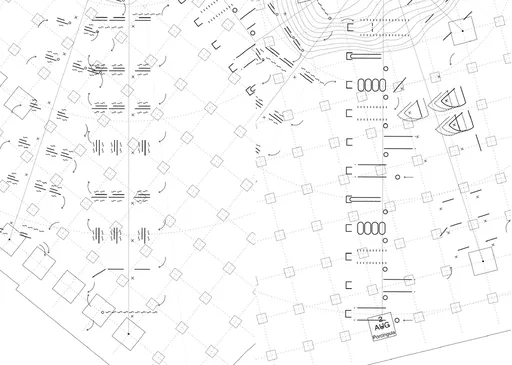
When Indigenous communities are asked to provide proof of their connection to ancestral lands, what Western legal forums accept as documentation does not truly represent or respect tribal culture and traditional formats of knowledge transfer.
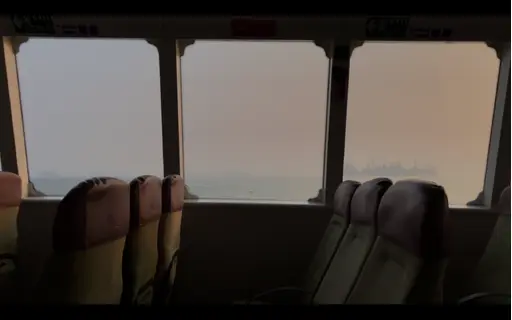
How do we reckon with our attachments to place, and their knotted historical relations? A meditation on maritime trade routes, SEA – SHIPPING – SUN (2021), is a short film directed by Tiffany Sia and Yuri Pattison shot over the span of 2 years to render a simulated duration of a day, from The film is set against a soundtrack of shipping forecasts from archival BBC Radio 4 broadcasts. The sun emerges and disappears, again and again.dawn until dusk.
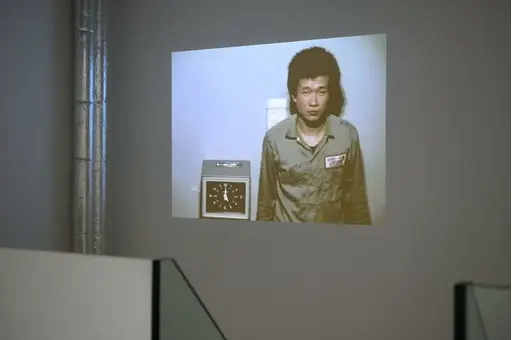
In this essay, Amelia Groom responds to Tehching Hsieh’s One Year Performance 1980–1981: Time Clock Piece (1980–1981), one of the works on view as part of the No Linear Fucking Time exhibition at BAK, basis voor actuele kunst, Utrecht. Through a reading of Dolly Parton’s contemporaneous antiwork anthem 9 to 5 (1980), Groom reflects on historical shifts in the ways that workers have been and continue to be exploited through techniques and technologies of time.

Grappling with the imposed linearity of timespace as a fundamental feature of colonial violence, this essay by Promona Sengupta (also known as Captian Pro of the interspecies intergalactic FLINTAQ+ crew of the Spaceship Beben) proposes a mode of time travel that is “untethered from colonial imaginations of the traversability of time and space.”
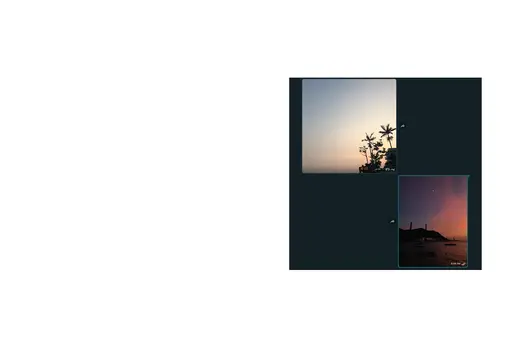
Weird Times (2021), is a 30-page chapbook by artists Tiffany Sia and Yuri Pattison on time-telling and hegemony. Featuring writing by Sia and images selected by Pattison, it is a brief history of the development of time-keeping technologies. The clock is disassembled as a political tool, a metronome of coercion and an accelerant of war power. Out of these mechanisms, resistant counter-tempos emerge.
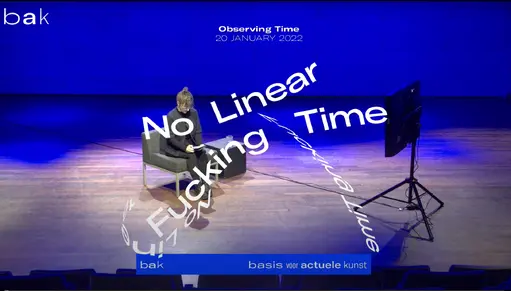
An online conversation with performance artist Tehching Hsieh, writer Amelia Groom, and writer and curator Adrian Heathfield, moderated by BAK curator of public practice Rachael Rakes on 20 January 2022. The conversation takes Hsieh’s work as a starting point in addressing performative time, labor time, gaps, and rhythms of endurance, among other things.
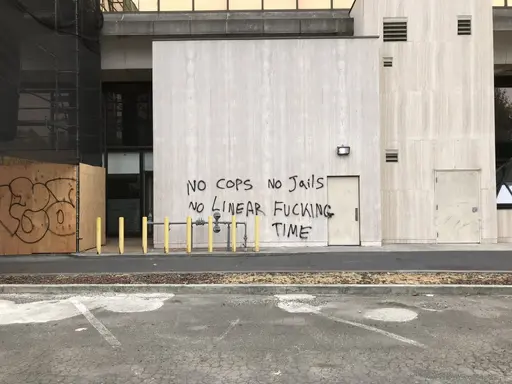
The “No Linear Fucking Time Bibliography” is an evolving resource which compiles selected scholarly and artistic texts relating to the various strands of study involved in this project.
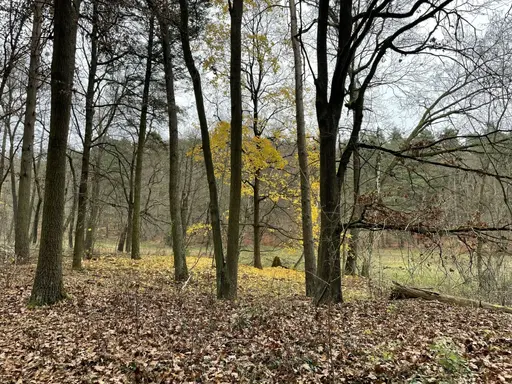
In “Reclaiming Time: On Blackness and Landscape” (first published in PN Review 257 in 2021), poet Jason Allen-Paisant traces the racialized social contexts and modern environmental constructs that “disproportionately rob Black lives of the benefits of time.”
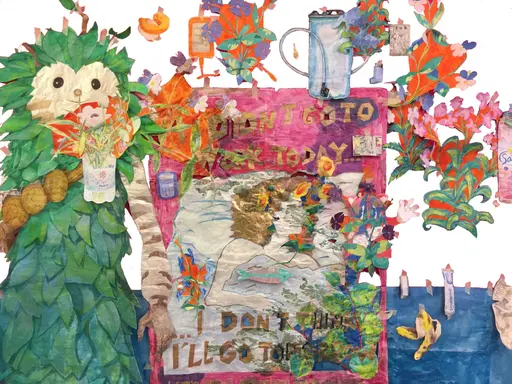
While walking through the “Nothing To Declare” arrivals gate at London Stansted Airport, Sam Keogh is confronted by three border guards: a pig, a unicorn, and a worried cartoon clock.
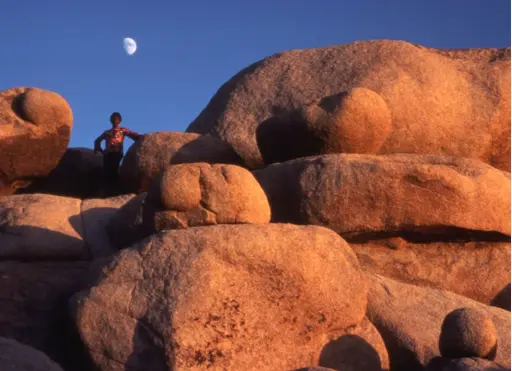
In this conversation with Walidah Imarisha (first published in Toward the Not Yet: Art as Public Practice, published by BAK and MIT Press, 2021), the writer and activist outlines her concept of “visionary fiction” as an imaginative practice to emancipate futures from the stronghold of linear time.

Drawing from her work as part of the Karrabing Film Collective, Elizabeth A. Povinelli’s essay “In Some Places the Not-Yet Has Long Been Already” (which first appeared in Toward the Not Yet: Art as Public Practice, published by BAK and MIT Press, 2021) contrasts the temporal orientation of late settler liberalism—which is troubled by the coming catastrophes of climate collapse—with the ancestral catastrophes of coloniality and enslavement, which are both past and present.
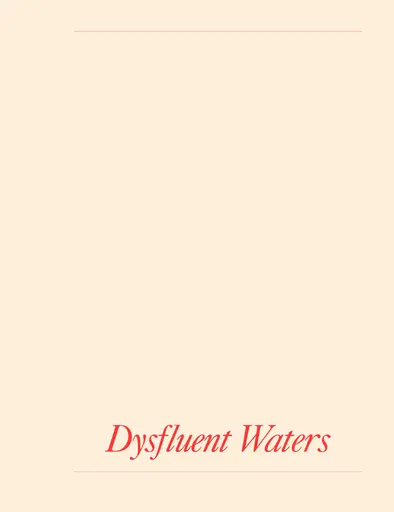
Designed by Rissa Hochberger, with additional design by JJJJJerome Ellis and Kelvin Ellis, the book The Clearing is the eighth title in Wendy’s Subway’s Document Series, an interdisciplinary publishing initiative highlighting the work of time-based artists in printed form.
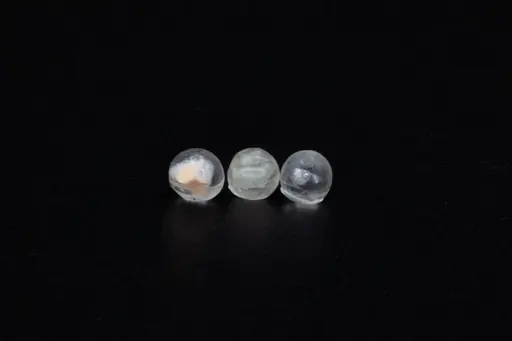
In her text “Dearest Zen (Letters to Lichen),” artist and scientist Adriana Knouf presents future love letters written to lichens, symbiotic organisms of fungi and algae or cyanobacteria.
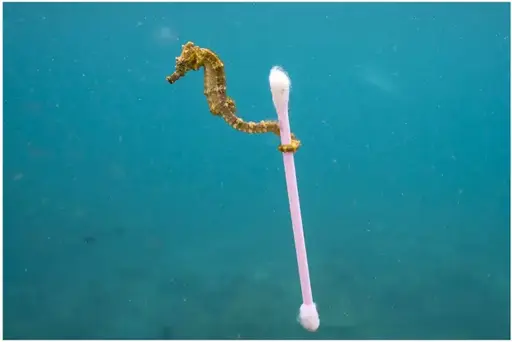
In “Immortals: On the Ancient Future Lives of Stone and Plastic,” Marianne Shaneen blends stories, histories, and ontologies of two substances: stone and plastic.
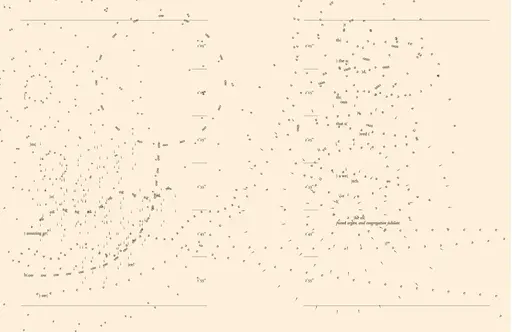
“The Clearing: Melismatic Palimpsest” is a part of musician and writer JJJJJerome Ellis’s multi-faceted project The Clearing (book published by Wendy’s Subway and album of the same name released by NNA Tapes, 2021). Conceiving of the forest and its clearings as “sites of resistant black oralities for centuries,” Ellis explores how stuttering, blackness, and music can figure within practices of refusal against the hegemonic governance of time, speech, and encounter.